What’s behind Nepal’s convention halls construction frenzy?
In-migration rose sharply in Butwal during the Maoist insurgency. Business expanded following the 2006 peace accord; the number of pilgrims to nearby Lumbini increased; and so did large-scale gatherings, events, and conferences. But Butwal lacked space to host them; it didn’t have a convention hall that could host large-scale gatherings.
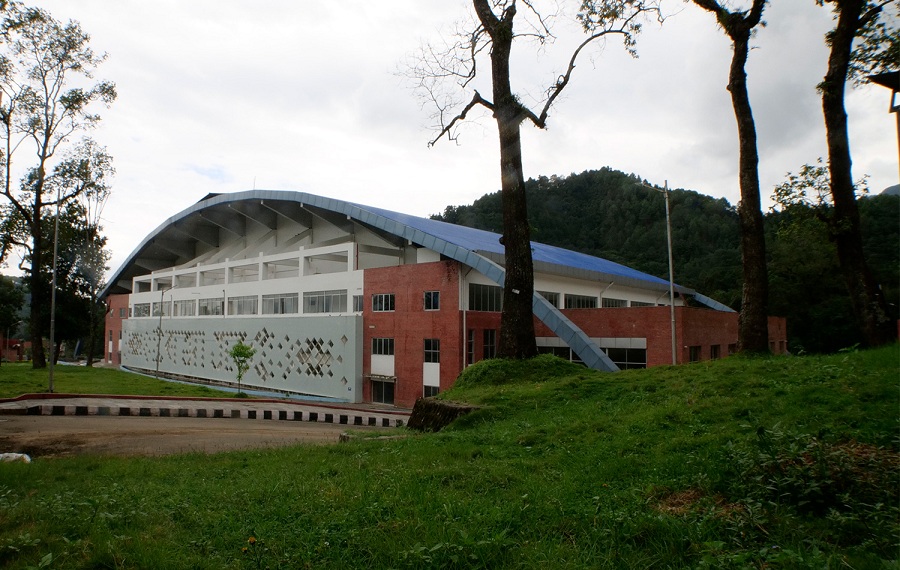
The government neglected local stakeholders’ demands for construction of such a convention hall. But organisations such as Butwal Chamber of Commerce and Industry, Rupandehi Trade Association, and Rupandehi Industries Association stepped forward, constructing three halls with capacities to host about 300-500 people each. These halls are currently in public use.
The CPN-UML organised its eight General Convention in Butwal in 2065 BS. The convention, which saw participation of thousands, was held at Butwalmandap in Ramnagar, in a makeshift, tarpaulin-covered space. As the convention was underway, a strong, fateful wind tore the tarpaulin covers apart. Ballot papers were lost and the event was a mess. Upon the completion of the convention, the UML rose up to the occasion—it announced that it would construct the country’s largest convention hall in Butwal.
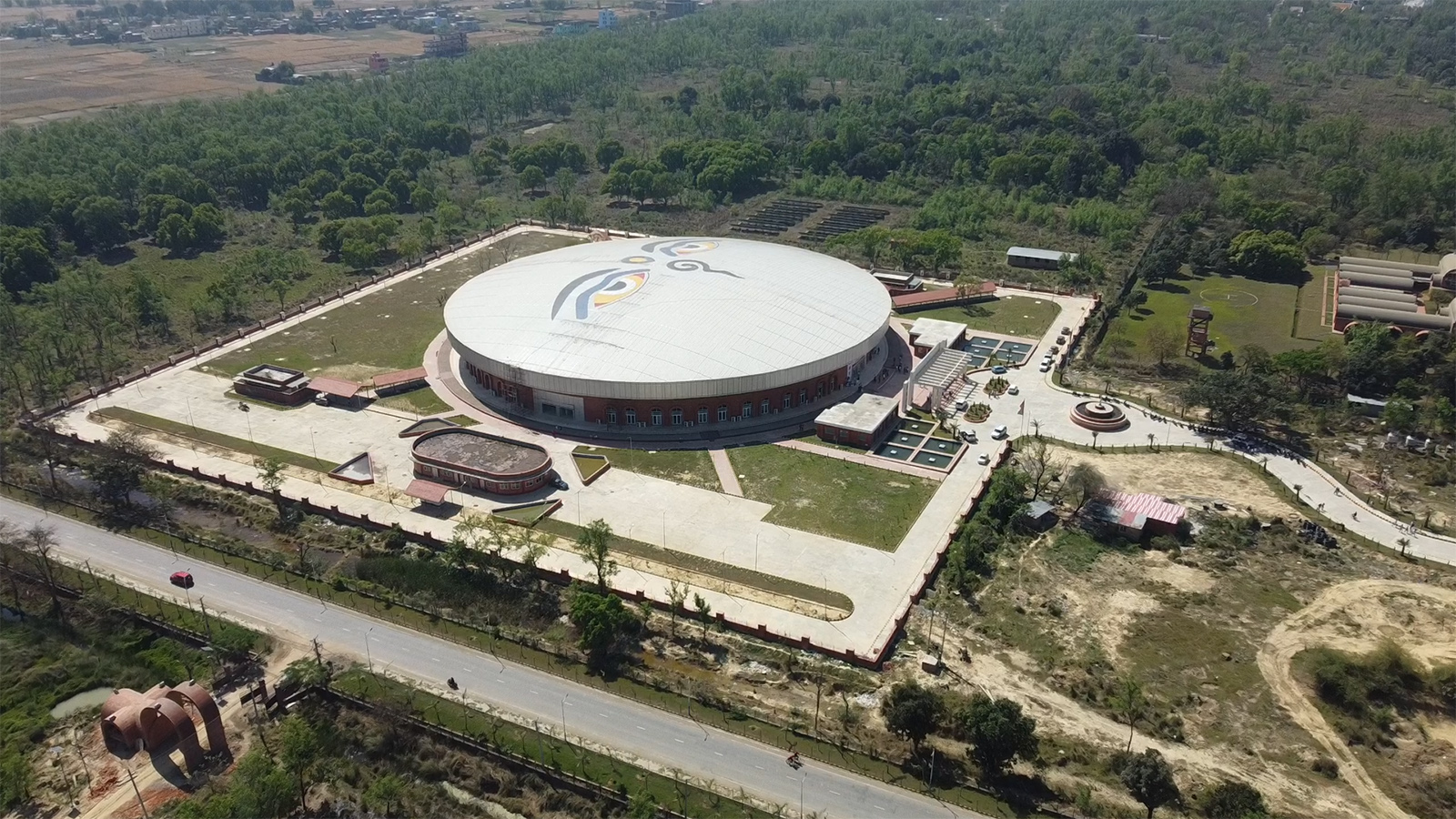
In fiscal year 2066-67 BS, the party disbursed Rs 10 million to prepare a detailed project report for the construction of the hall at the very venue where its general convention had taken place. The foundation stone for the construction at the 9-bigaha-6-kattha land was laid on Magh 15, 2071. The construction was complete in eight years. The then prime minister Sher Bahadur Deuba inaugurated it on Bhadra 11, 2079 amid much fanfare.
Six years before, on Jestha 8, 2073 BS, as the convention hall was under construction in Butwal, a Buddha Jayanti function was being organised about 38 kilometres away in Lumbini. A sudden windstorm tore through the event venue and swept away the tent used as cover, turning the venue into a muddy mess. Once the wind settled down, then Prime Minister KP Sharma Oli ascended on the stage and made a grand announcement to rounds of applause—that a convention hall of capacity to host 5000 people would be constructed in Lumbini.
The Oli-led government disbursed the budget for the project in fiscal year 2074/75 BS. Initially estimated to cost Rs 330 million, the project took up nearly Rs 700 million by its completion in four years. The hall, named Lumbini International Buddhist Hall and Meditation Centre, was inaugurated by then prime minister Sher Bahadur Deuba in Jestha, 2079 BS.
Prime Minister Oli also presided over the construction of a convention hall in Godavari, Lalitpur. Oli inaugurated that hall, the Sunrise Convention Centre, with a capacity of 3000 people, on Baisakh 31, 2078.
Over the past ten years, as many as 47 such conference halls have been constructed across Nepal. But many such halls, constructed without analysing local needs and demands, have not even come into use. Some others lie in disrepair due to prolonged disuse.
‘Needless extravagance’
The Butwal International Convention Centre, built at the cost of Rs 1 billion 110 million, is rarely used these days for a lack of maintenance. The centre has a main hall of capacity to host 1000 people and 12 smaller halls. But these days, the centre sits quiet and empty. “The centre didn’t operate as expected,” says Dharmendra Panthi, who previously served as the centre’s chief. “The centre sees about 2-4 events in a month. Rest of the time, it’s quiet.”
The Department of Urban Development and Building Construction has fixed a rent fee of Rs 176,000 per day for the main hall. For a lack of operation directive and work on interiors, the 12 small halls are not in use.
Why has this centre, boasting extravagant structure, well-managed parking facilities and eye-popping decoration, not come into use as expected?
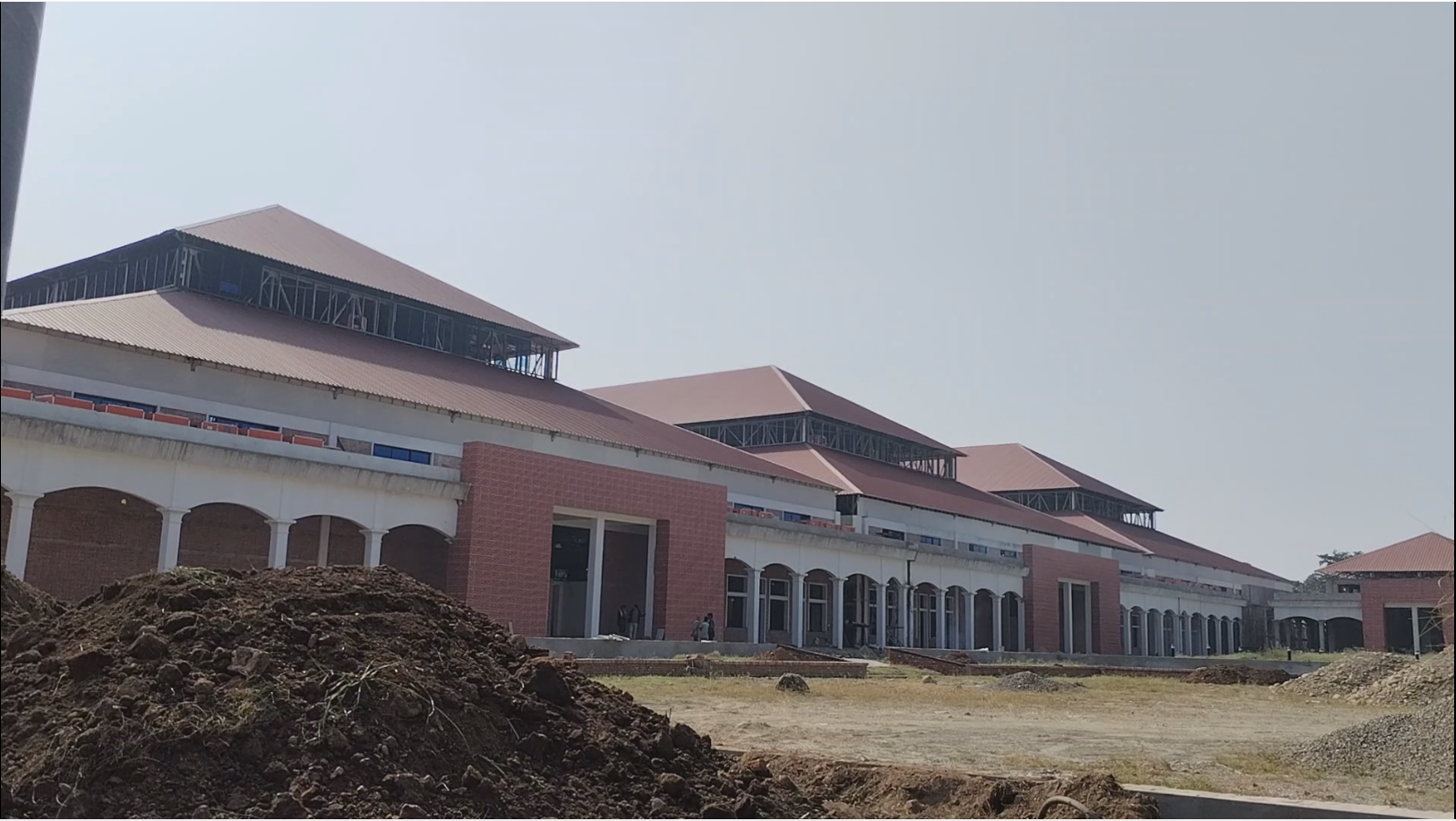
“The centre’s rent fee is too high,” says Rachana Panta, a tourism entrepreneur. “There are several other institutional buildings and hotels around Butwal that offer halls at a lower rent fee. Why would anyone pay such an exorbitant fee when there are cheaper options available nearby?”
The centre’s annual operating cost is about Rs 400,000. According to Shobhakar Gyawali, the centre’s information officer, as many as 70 events have been organised at the centre in the 31 months since it came into operation. The centre has made an income of Rs 9 million from them. These days, the centre mostly hosts colleges’ anniversary events and student welcome functions.
“When we needed a large-scale convention hall, we didn’t have it,” says Hari Prasad Aryal, chair of Butwal Chamber of Commerce. “Now the economy is struggling, and there are hardly any big events, so the hall is hardly needed. The smaller halls have yet to have lights and sound systems installed.”
In Chaitra 2080 BS, the charity organisation Rotary International District 3292 Nepal-Bhutan decided to organise its 16th district conference in Butwal. For the conference, being held on Chaitra 2-4, the organisation agreed to pay Rs 319,000 for the main hall. The organisers began to send invitations to the guests. But when they went to check the hall, there was no running water on the toilet. The switchboards were damaged, and the water fountain didn’t work. The hall’s carpets and the wall’s decoration were damaged. It was not possible to postpone the conference at the last hour. “We hastily repaired the conference hall spending a further Rs 350,000,” said chair of the conference committee Aizaz Alam. “Many parts of the hall are already damaged. As it is, it can’t host international-level conferences.”
Meanwhile, the Lumbini International Buddhist Hall and Meditation Centre, constructed at the cost of Rs 700 million, remains closed most of the time while the large-scale international events in Lumbini take place in the surrounding meadows and gumbas.
Two years since its inauguration, the centre has earned, all told, Rs 2 million 150 thousand in revenue from 10 events. The rent for the centre, which sprawls across 8,300 sq km area, is fixed at Rs 150,000 per day. Haridhwoj Rai, information officer at Lumbini Development Trust, says problems have emerged for a lack of directive to operate the conference hall. “We are conscious about the need to increase the hall’s use,” he says. “But there’s confusion about how to do so.”
The centre, with a capacity to host 5,000 people, has an air-conditioned hall and soundproof meditation centre. But since it was built without research on local needs, it hasn’t proved fruitful, says Khim Shrestha, a tourism entrepreneur. Plus, the rent is too high, he adds. “With the amount necessary to pay rent for this hall, you can organise a conference in a nearby hotel, food included,” Shrestha says.
Meanwhile, the Godavari-based Sunrise Convention Centre has so far hosted only two large-scale conferences—the UML’s statute convention in Asoj, 2078 BS, and Nepali Congress’s Mahasamiti meeting in Falgun, 2080 BS. The hall often hosts wedding functions and family parties.
The centre, with a capacity to host 3,000 people and spread across 46 ropani land, doesn’t have a parking lot to match. Also because it is situated far from the city and the road leading to it is not in good condition, it remains underutilised.
The centre has earned a revenue of Rs 1.2 million in fiscal year 2080/81 BS. But this income is not sufficient to even pay for electricity, water and cleanliness fares, according to account officer Roshana Adhikari.
First the view towers, then conference halls
To understand just how haphazardly conference halls are being constructed in the country, let’s take an example of Syangja district. Syangja is a hill district whose population has been declining of late. According to the National Statistics Office, between 2068 BS and 2078 BS, the district’s population declined by 34,000. Its population growth rate is in the negative (-1.21). But recently, as many as four conference halls have been constructed in the district, at the cumulative cost of Rs 141 million 500 thousand.
A conference hall with capacity of 500 seats is constructed in district headquarters Syangja at the cost of Rs 17 million 700 thousand. Galyang, another town in the district, has a conference hall of 228-seat capacity, built at the cost of Rs 42 million 400 thousand. Likewise, Chapakot has a hall of 288-seat capacity built at the cost of Rs 41 million 300 thousand and Aandhikhola Rural Municipality has another conference hall of as much capacity built at the cost of Rs 40 million 100 thousand.
Ironically, these conference halls hardly host any conferences. Sri Prasad GT, chief of District Coordination Committee, Syangja, says, “The budget would have been better spent on infrastructures like roads. There’s little utility of conference halls that hardly see 10 events in a year.” A conference hall of 200-seat capacity at his office hosts most of the official conferences in the district while the other conferences sit empty and quiet, GT adds.
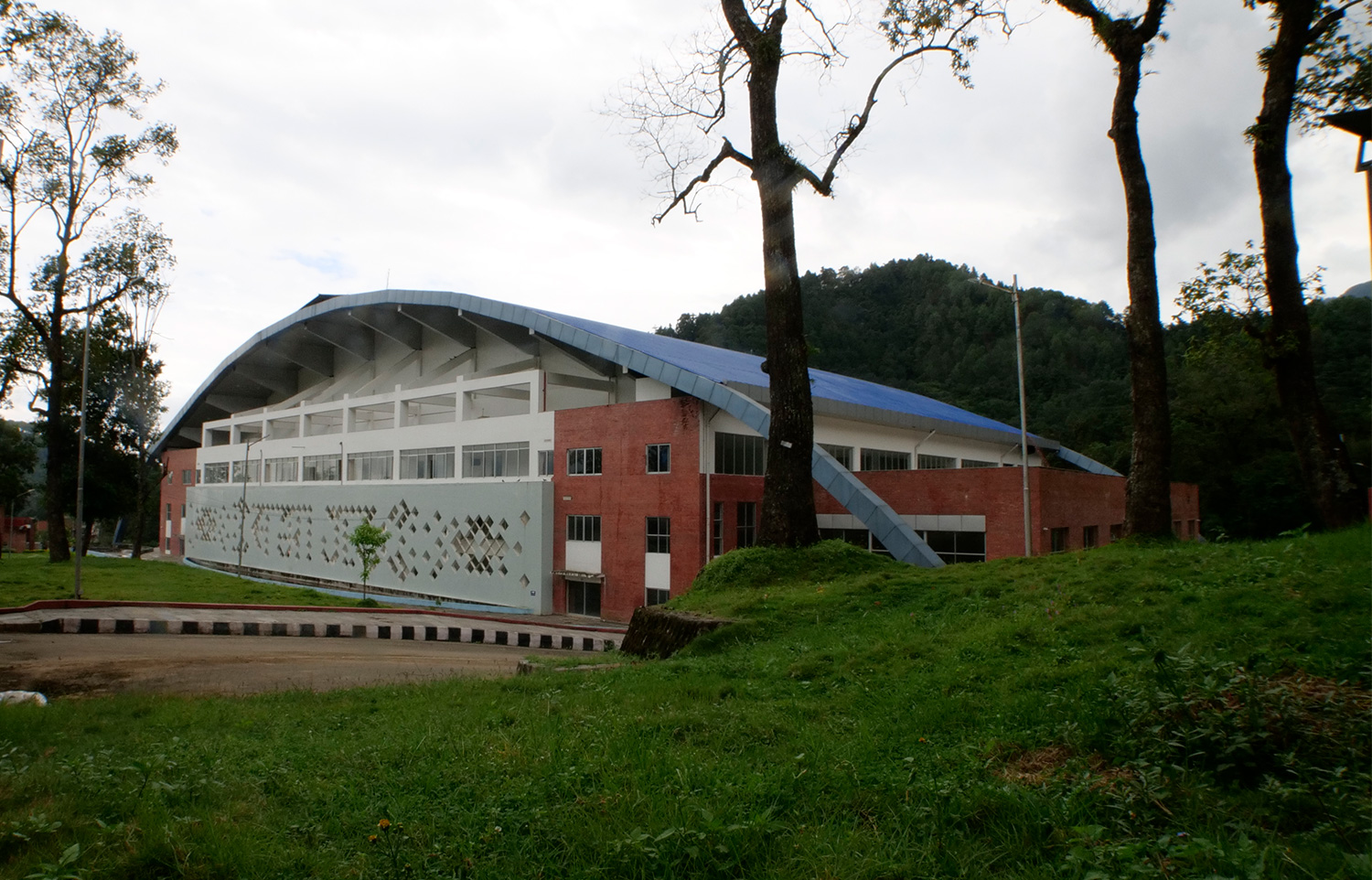
Meanwhile, in Chitwan, there are three conference halls under construction within a distance of 10 kilometres. A hall of 1000-seat capacity has just been built in Sauraha at the cost of Rs 311 million 700 thousand. Likewise, a 600-seater is under construction in Ratnanagar and a massive 2000-seater in Narayangadh. These halls are expected to cost Rs 165.8 million and Rs 878.8 million, respectively.
Investing in conference halls to increase public events and economic activities is misguided, says Dinesh Kumar Chuke, chair of Bharatpur Religious Tourism Development Committee based in Chitwan. “These days, the private sector is itself constructing decent halls with modern facilities,” he says. “One such hall in a district would be enough.”
This construction frenzy is not limited to cities and towns alone, it extends to bazaars and villages, across Tarai, mountains and hills. Many of them have collapsed even before they have come into operation.
Rasuwa’s Dhunche and Kalikasthan are witnessing the construction of one conference hall each, 30 kilometres apart. As much as Rs 91.5 million is being invested in these projects. The district, however, rarely hosts public events. Other such remote districts like East Rukum, Dolakha, Jajarkot, Sankhuwasabha and Baitadi are also overseeing the construction of conference halls.
“This conference hall is not the demand of Rukum residents,” says Dhati Sunar, former member of provincial assembly representing Rukum East. “Rukum residents need roads, schools and hospitals but we don’t get that.”
What’s behind this haphazard construction trend?
Advocate Mahendra Prasad Pandey, former chair of Transparency Stakeholders’ Group in Rupandehi, says that conference halls are not being constructed out of demands from the locals but because of leaders’ whims. “Village residents demand hospitals, roads, schools, drinking water taps, electricity and jobs, not conference halls,” he says. “Conference halls are being constructed without researching people’s needs and demands. They are the product of leaders’ whims. That’s why their utility is in question.”
Sadhya Bahadur Bhandari, a development expert, says that conference halls are being constructed for cheap popularity and commission. “Halls built at the cost of millions haven’t been able to earn even operation costs. What’s more shameful than that?” he says.
Former finance minister Prakash Sharan Mahat says that constructing conference halls usually involves a top-down approach—the projects are not recommended by the local residents but by the leaders and bureaucrats at higher echelons of power. “There may be some exceptions but most are built due to pressure from political leaders,” Mahat said.
While construction of conference halls continued unabated, a directive to operate them never got made. Lack of a directive did not just pose an obstacle in operating the halls but also led to a misuse of public property. The auditor general’s 61st report has raised this question. “If the conference hall was not necessary, why was it built?” Toyam Raya, the auditor general, says. “If it was necessary, why is it not operated?”
Where are these convention halls?
Dr Govindaraj Pokharel, former chair of National Planning Commission, says it is regrettable that political leaders plan conference halls haphazardly. “Development plans are made out of the leaders’ interests, not people’s, hence there are way too many view towers and conference halls,” he says.
Pokharel adds that entrepreneurs are currently worried about the lack of favourable investment climate. Youths are flying abroad for work and education. Villages are getting emptied out. “Amid this, the government should have focussed not on large-scale infrastructure like view towers and conference halls but on education, jobs and production.”
The Department of Urban Development and Building Construction has formulated the Convention Centre Operation Code 2079. According to which, metropolitan city offices can operate convention centres of up to 1000-seat capacity, municipalities up to 500-seat capacity and sub-metropolises can operate convention centres of up to 700-seat capacity. The department has the responsibility to monitor convention centres that have above 1000-seat capacity.
Data show that the department has completed the construction of 21 convention halls around the country. Of which, the responsibility of 13 halls have been given to the local units and district coordination committees, including the city halls in Putalibazar, Syangja, Kailali’s Tikapur, Doti, Mehalkuna in Surkhet, and Rautahat’s Maulapur, among others.
But these halls lie in disrepair and haven’t been able to earn operating costs. Rajesh Agrawal, a central member of Chamber of Commerce and Industries, says that the government-made convention halls are increasingly out of fashion as the private sector hotel entrepreneurs have themselves constructed state-of-the-art halls these days. “The number of public functions has come down drastrically due to economic recession and youth exodus to foreign lands,” Agrawal says. “Hence, the government investment on convention centres is plain splurge.”
Over Rs 26 billion investment in 47 convention centres
Record about the number of convention halls across the country and how they are operated is scarce.
According to The Department of Urban Development and Building Construction, as many as 43 convention halls are either already constructed or are under construction. Of them, 21 have been completed as of Chaitra in fiscal year 2081/82. Twelve are under construction, while tenders have been invited for five. Detailed project reports are being made for five more. The total cost of these halls is Rs 21 billion. Under the federal government, as many as 47 convention halls are either constructed or are under construction; their total cost exceeds Rs 26 billion.
Finance Minister Bishnu Paudel, however, insists that the convention halls are being constructed to address locals’ demands and needs, and to revitalise the economy. “Because of the economic recession and slowdown in public functions, there is an illusion if the convention centres are really necessary,” Paudel says. “But once the economy comes alive, their utility and importance will be apparent.”
But how to actually operate the convention halls whose construction is complete? Dr Nahakul KC, former vice-chair of Lumbini provincial planning commission, says that the local units should hand over the responsibility to operate the convention halls to the private sector. “That could help conserve and operate the convention halls,” KC says. “Otherwise, they will continue to lie in disrepair.”


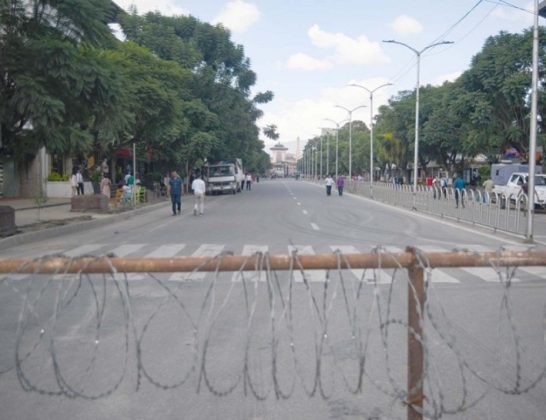
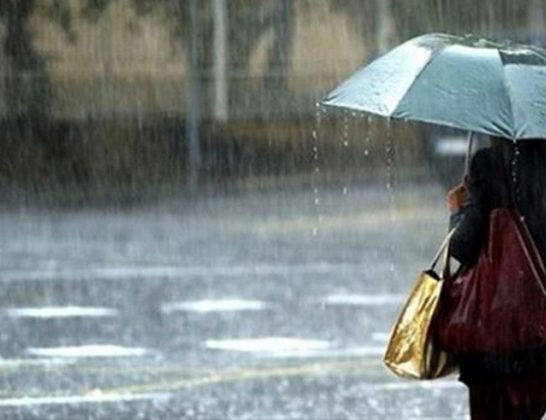
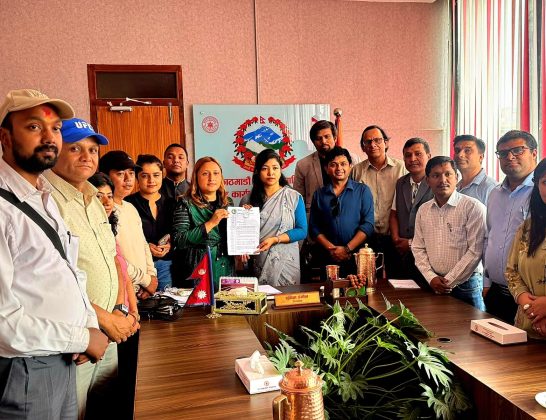
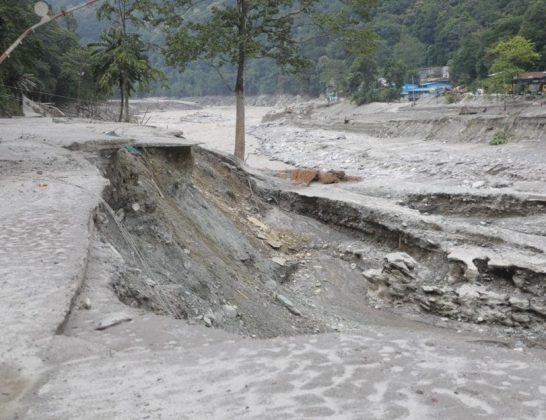
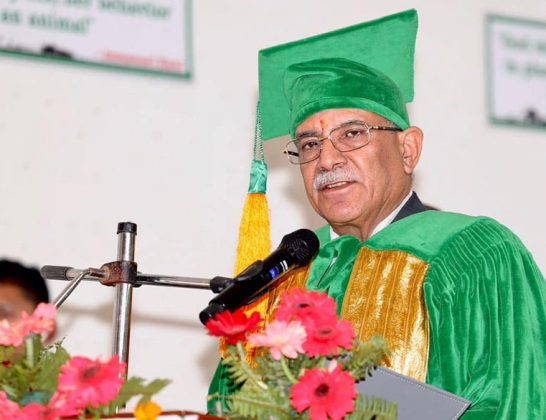



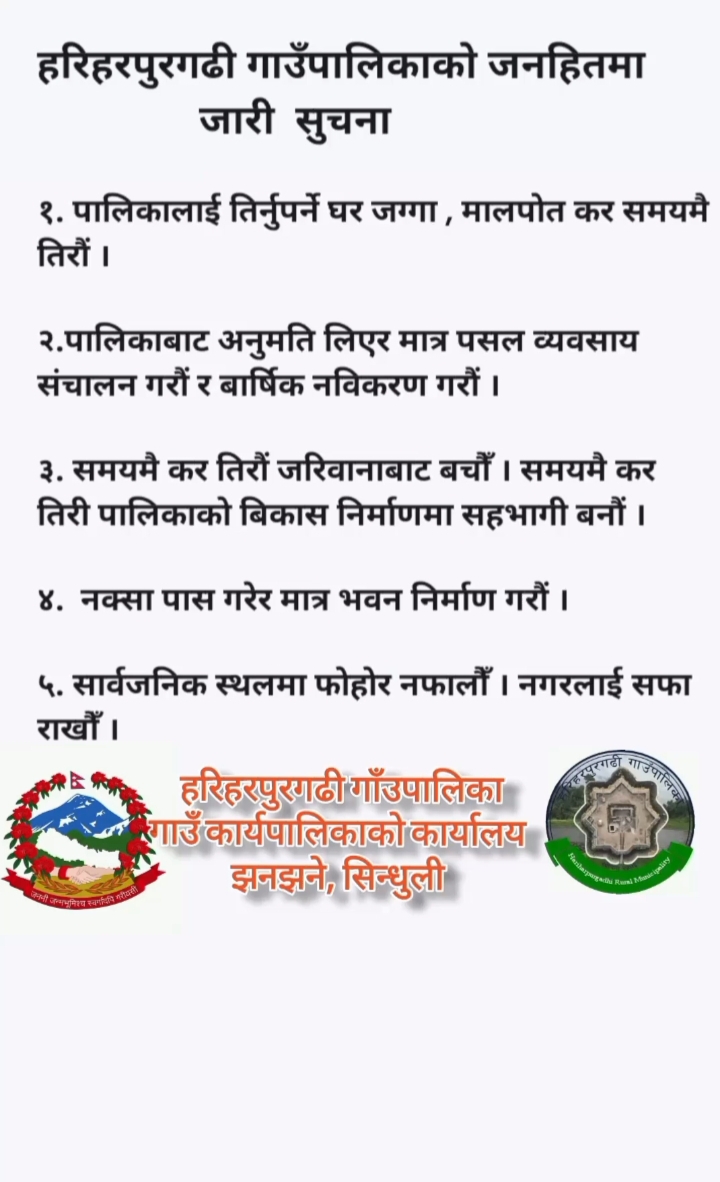
Comments